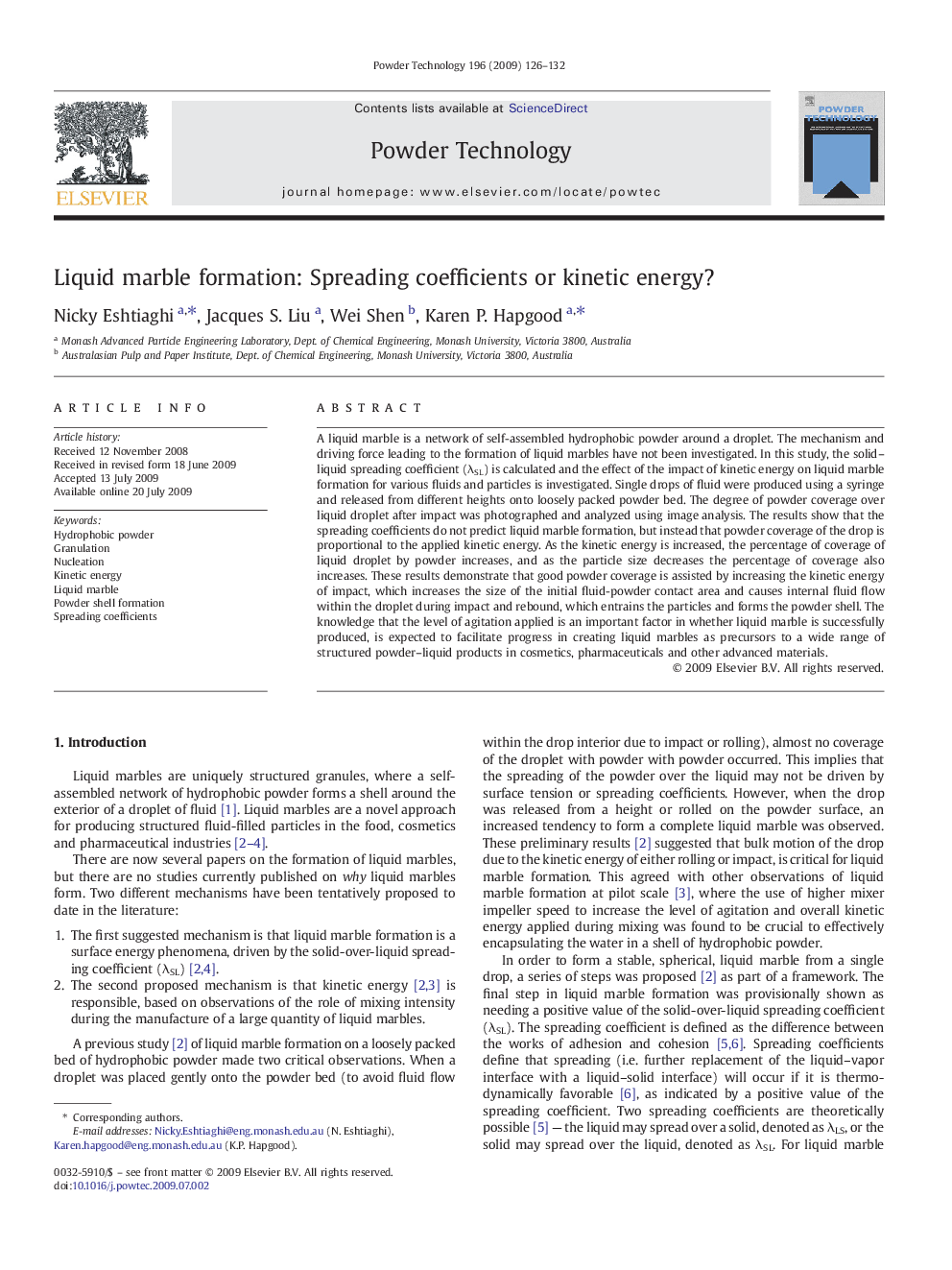| Article ID | Journal | Published Year | Pages | File Type |
|---|---|---|---|---|
| 238054 | Powder Technology | 2009 | 7 Pages |
A liquid marble is a network of self-assembled hydrophobic powder around a droplet. The mechanism and driving force leading to the formation of liquid marbles have not been investigated. In this study, the solid–liquid spreading coefficient (λSL) is calculated and the effect of the impact of kinetic energy on liquid marble formation for various fluids and particles is investigated. Single drops of fluid were produced using a syringe and released from different heights onto loosely packed powder bed. The degree of powder coverage over liquid droplet after impact was photographed and analyzed using image analysis. The results show that the spreading coefficients do not predict liquid marble formation, but instead that powder coverage of the drop is proportional to the applied kinetic energy. As the kinetic energy is increased, the percentage of coverage of liquid droplet by powder increases, and as the particle size decreases the percentage of coverage also increases. These results demonstrate that good powder coverage is assisted by increasing the kinetic energy of impact, which increases the size of the initial fluid-powder contact area and causes internal fluid flow within the droplet during impact and rebound, which entrains the particles and forms the powder shell. The knowledge that the level of agitation applied is an important factor in whether liquid marble is successfully produced, is expected to facilitate progress in creating liquid marbles as precursors to a wide range of structured powder–liquid products in cosmetics, pharmaceuticals and other advanced materials.
Graphical abstractA liquid marble is a network of self-assembled hydrophobic powder around a droplet. The mechanism and driving force leading to the formation of liquid marbles have not been investigated. In this study, the solid–liquid spreading coefficient λSL is calculated and the effect of the impact of kinetic energy on liquid marble formation for various fluids and particles is investigated.Figure optionsDownload full-size imageDownload as PowerPoint slide
